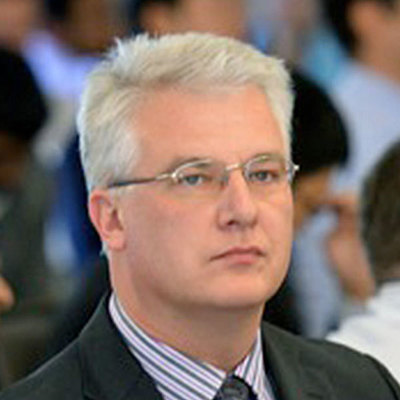Joerg Appenzeller
Purdue University

Talk Title: Emerging applications from two-dimensional systems and their potential for 3D heterogeneous integration
While two-dimensional (2D) materials have attracted the interest of many scientists since about 2011 when the first transition metal di-chalcogenide (TMD) field-effect transistor (FET) was demonstrated [1], only most recently experimental results were published that are hinting at the potential of TMDs and other novel 2D materials for truly unique applications. Once a new low-dimensional semiconductor is discovered, the research community unerringly focuses in almost all instances on building FETs and determining the carrier mobility (μ) – ideally hoping to be able to quote μ-values that outperform silicon. This repeatedly occurring race, however, is often overlooking the uniqueness that new materials can offer that – with the right amount of creativity – can translate into entirely new applications. In my talk I will argue that the lowest entry point for 2D materials as an emerging technology lies in the interconnect application space [2]. In fact, the ultra-thin body of 2D materials offers opportunities to replace conventional barrier and liner materials with much thinner alternatives to preserve the current drive capabilities of interconnects. As a second example, I will show recent work on a novel MoTe2 based RRAM device, where an ultra-fast electric field induced phase transition holds the promise for previously unachievable memory applications [3]. Lastly, I will discuss the successful demonstration of spin orbit torque switching of a 2D ferromagnet (FM), i.e. Cr2Ge2Te6 as an example of an emerging MRAM technology that allows for unprecedentedly low switching currents [4]. All of the above needs to be evaluated not as stand-alone demonstrations of individual emerging technologies, but holds the additional promise of an integrated 3D heterogeneous approach due to the opportunity that 2D materials offer in terms of stacking. It is my belief that 2D logic, memory and interconnect applications all together will allow for unique and yet unforeseeable integrated system demonstrations if the scientific community has the patience to explore the same.
References:
- [1] B. Radisavljevic, A. Radenovic, J. Brivio, V. Giacometti, and A. Kis, Nature Nanotechnology 6, 147 (2011).
- [2] C-L. Lo, B.A. Helfrecht, Y. He, D.M. Guzman, N. Onofrio, S. Zhang, D. Weinstein, A. Strachan, and Z Chen, J. Appl. Phys. 128, 080903 (2020); doi: 10.1063/5.0013737
- [3] F. Zhang, H. Zhang, S. Krylyuk, C.A. Milligan, Y. Zhu, D.Y. Zemlyanov, L.A. Bendersky, B.P. Burton, A. V Davydov, and J. Appenzeller, Nature Materials 18, 55 (2019).
- [4] V. Ostwal, T. Shen, and J. Appenzeller, Advanced Materials 32, 1906021 (2020).
Bio
Dr. J. Appenzeller received the M.S. and Ph.D. degrees in physics from the Technical University of Aachen, Germany in 1991 and 1995. His Ph.D. dissertation investigated quantum transport phenomena in low dimensional systems based on III/V heterostructures. He worked for one year as a Research Scientist in the Research Center in Juelich, Germany before he became an Assistant Professor with the Technical University of Aachen in 1996. During his professorship he explored mesoscopic electron transport in different materials including carbon nanotubes and superconductor-semiconductor-hybride devices. From 1998 to 1999, he was with the Massachusetts Institute of Technology, Cambridge, as a Visiting Scientist, exploring the ultimate scaling limits of silicon MOSFET devices. From 2001 until 2007, he had been with the IBM T.J. Watson Research Center, Yorktown, NY, as a Research Staff Member mainly involved in the investigation of the potential of carbon nanotubes and silicon nanowires for a future nanoelectronics. Since 2007 he is Professor of Electrical and Computer Engineering at Purdue University and Scientific Director of Nanoelectronics in the Birck Nanotechnology Center. In 2014 he became the Barry M. and Patricia L. Epstein Professor of Electrical and Computer Engineering. His current interests include novel devices based on low-dimensional nano-materials as nanowires, nanotubes, graphene and di-chalcogenides.